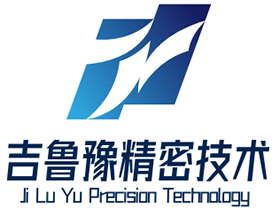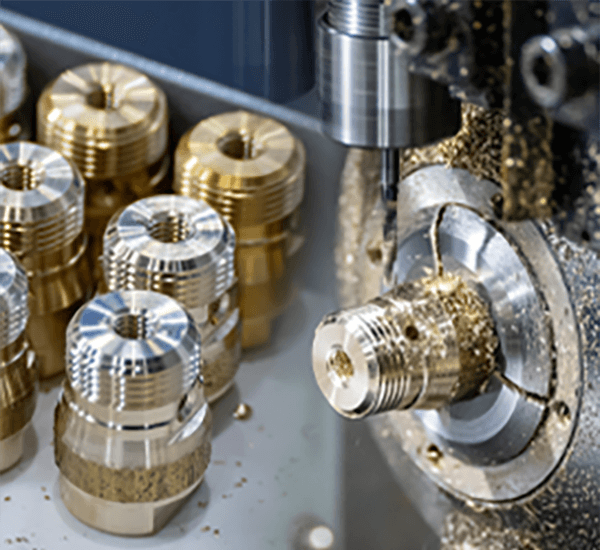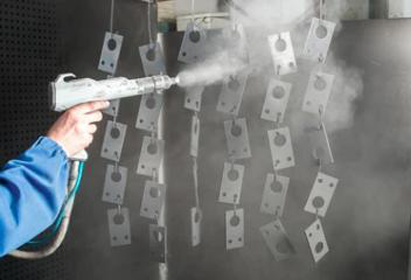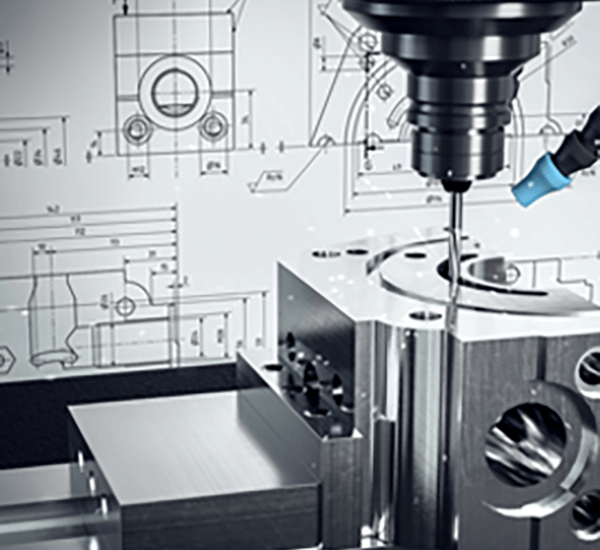
Realizing precise finish on a turned or milled piece is vital.
- Specification callouts prescribe the detailed finish for parts
- These callouts often use terms like "Ra," which stands for arithmetic mean deviation to quantify the surface roughness
- Comprehending finish specifications is crucial to meet operational standards
- A well-defined surface finish can impact factors such as lubrication, friction, and durability
- Right interpretation of surface notes ensures attainment of the sought condition
CNC Machining and Precision Engineering

Robotic-assisted machining defines a modern manufacturing practice by leveraging computer-aided programs machines execute intricate designs with remarkable accuracy.
- Computer-driven machining creates reliable parts from assorted materials
- The versatility of CNC machining makes it ideal for aerospace, automotive, medical, and electronics
- CNC processes produce uniform parts with high repeatability over runs
Across R&D to production scale-up CNC machining drives manufacturing evolution
CNC Spec Interpretation
Parsing spec sheets may feel challenging at initial inspection
Though a little background plus organization helps you interpret technical details effectively
Set out by finding key metrics: spindle speed, feed settings, positional accuracy, work envelope, controller
Every spec plays a role in determining machine performance.
Illustratively, greater spindle rpm aligns with softer workpieces; increased feed raises manufacturing pace.
Comprehending those interactions assists in picking the proper CNC for tasks
Take time to inspect maker literature meticulously.
Vendor literature commonly contains useful guidance and explains terms
Complete Overview of CNC Equipment
CNC systems refer to programmed machine tools for accurate automated part production across materials They interpret CNC code instructions to command cutting tools and motion.
- Examples of CNC types are vertical mills, CNC lathes, CNC routers, plasma cutters
- Fabrication techniques operate on ferrous, nonferrous, polymeric, and composite materials
- In addition these machines facilitate quick prototyping and short-run manufacturing for startups and labs
Fundamental CNC Machine Concepts
They exemplify the union of precise mechanics and modern control software These versatile tools utilize computer programming to automatically manufacture a wide range of parts from simple components to complex assemblies The central concept is rendering digital designs as physical parts.
- Software-driven machining
- Programmed manufacturing process
It follows systematic positional moves controlled by code Skilled staff determine cutting conditions, observe operations, and verify finished part quality.
Significance of Surface Finish in CNC
Realizing specified surface quality in machining is vital It modifies operational efficiency and cosmetic finish Base material, cutting conditions, and post-machining refinements govern texture.
Fine finishes raise resilience whereas rough profiles can restrict performance Automated machining presents a spectrum of techniques and tools to accomplish desired finishes.
- For example using different cutting tool geometries |carbide alloys|feed and speed combinations to realize required texture
- Furthermore secondary operations such as polishing, grinding, or sanding enhance finish
Recognizing how feeds, speeds, and tool geometry interact yields optimal finishes.
Introduction to CNC Machining
A precise fabrication technique, it applies computer-controlled machines to produce parts from assorted materials They execute coded toolpaths to create intricate parts repeatedly Comprehending toolpaths, G-code, and tooling strategies supports effective machining
CNC applications stretch across aerospace, automotive, medical device, and electronics industries From aircraft parts to precision plastic molds, CNC creates complex high-quality items
Notation for Surface Finish on Machined Parts
Clear finish definition is critical for CNC machined components It makes sure the product satisfies function and aesthetic demands Surface finish callouts are typically represented using the system known as the Surface Roughness Ra Expressed in units like µm or mils, the metric describes average roughness amplitude.
Account for desired texture and the component’s purpose when selecting finish

Often a polished surface is selected when precise tolerance and fit are required
Textured surfaces may be selected to improve grip or frictional engagement
Apply clear finish annotations in technical drawings to state desired texture Specify the Ra metric and note any secondary treatments or special machining steps.
Understand that effective surface annotations are critical to production success
Categories of CNC Machines and What They Do
CNC machining spans many technologies and machine classes to address different operational needs They pair with CAD software to translate designs into cutting commands for precise fabrication.
- Mills shape slots pockets and complex contours through rotary cutting
- Routers handle flat panel cutting and profiling for non-metal workpieces
- Laser, waterjet, and plasma technologies suit intricate shapes and delicate workpieces
Select machinery by weighing material, complexity, and tolerance needs Each type of CNC machine offers unique capabilities making them essential tools in diverse industries from automotive to aerospace.
Realizing Superior Texture with CNC Machining
Achieving a superior surface finish is crucial in numerous manufacturing processes and CNC machining offers an exceptional method for achieving this goal By leveraging precise control over cutting parameters such as feed rate spindle speed and tool geometry machinists can effectively manipulate the material removal process to produce surfaces with minimal imperfections Moreover premium cutters and correct coolant application enhance surface outcomes Through careful selection of cutting strategies and meticulous machine setup CNC machining enables the creation of components with exceptional surface quality for diverse applications.
Programming Strategies for Surface Finish
Tuning code to influence finish plays a central role in meeting quality aims Combining feed, speed, and tool form strongly affects surface pattern and roughness Precise setting selection and effective coolant control support high-quality finishes.
- In addition periodic tool servicing and checks secure consistent surface quality Additionally routine tool checks and upkeep maintain consistent finish quality Besides that systematic tool upkeep and cnc machine definition monitoring ensure sustained surface quality
- To perfect surface results factor in material, roughness, and intended application
- Simulation aids in adjusting parameters virtually to prevent surface problems
- Also ongoing tool care and inspection support sustained finish reliability
